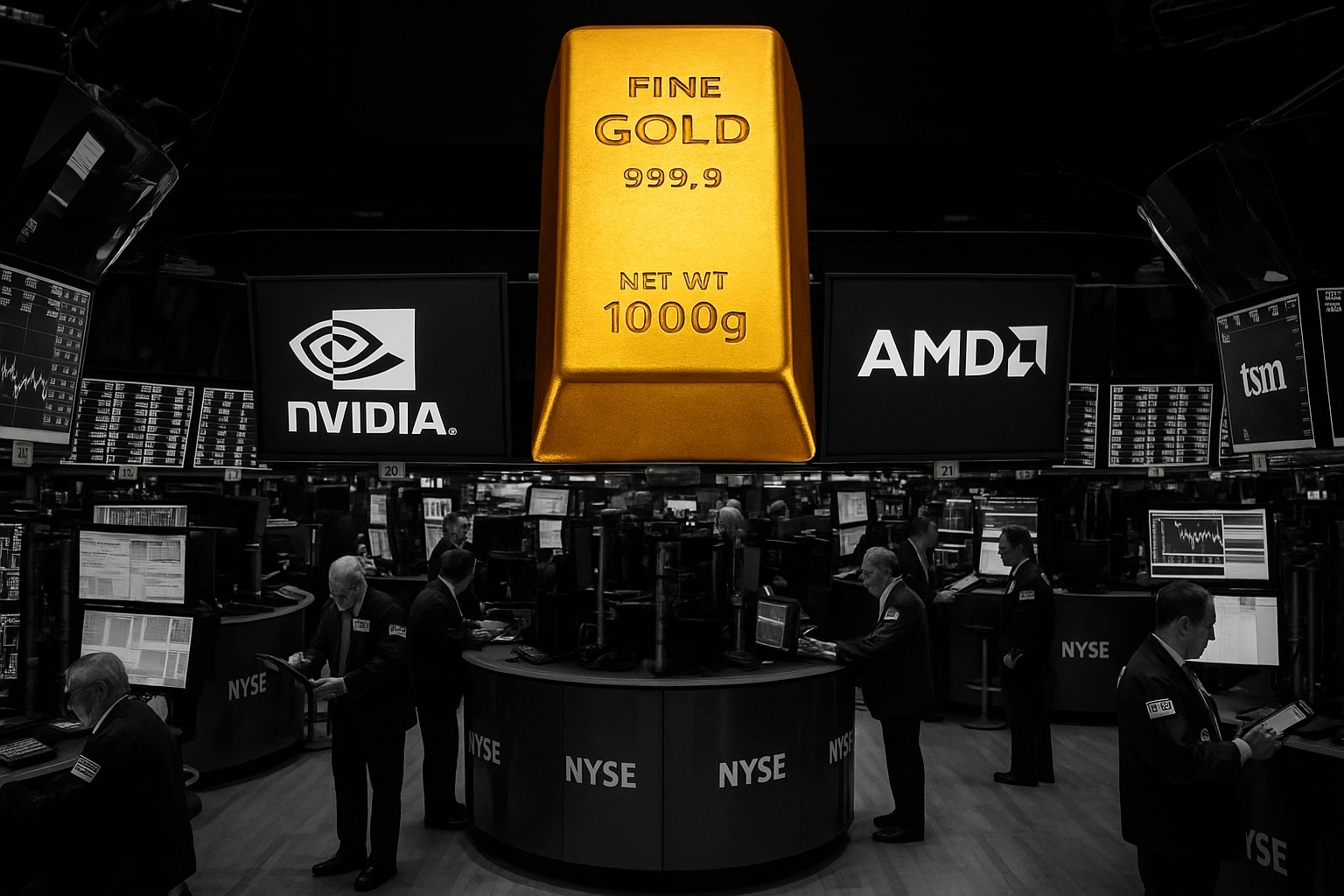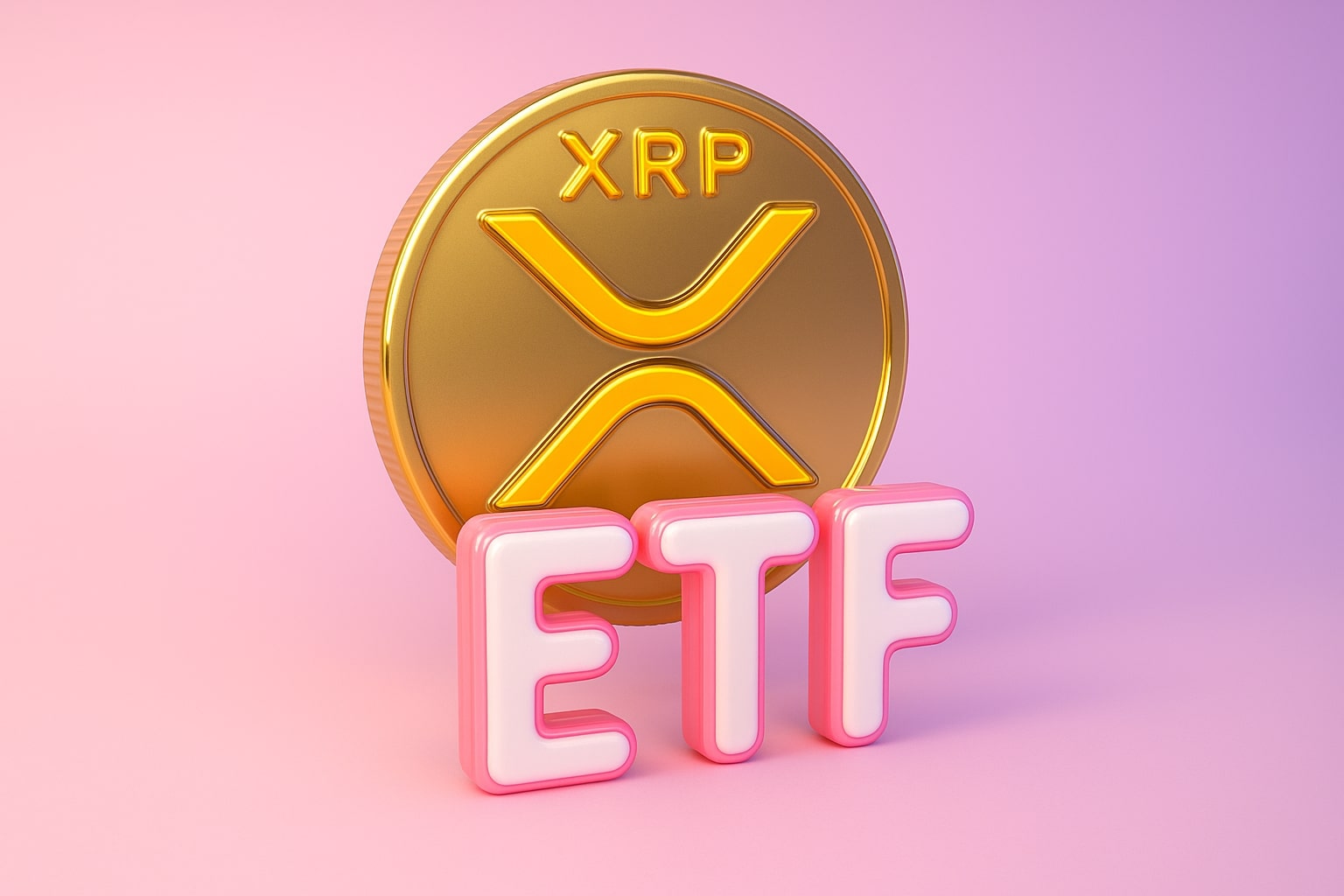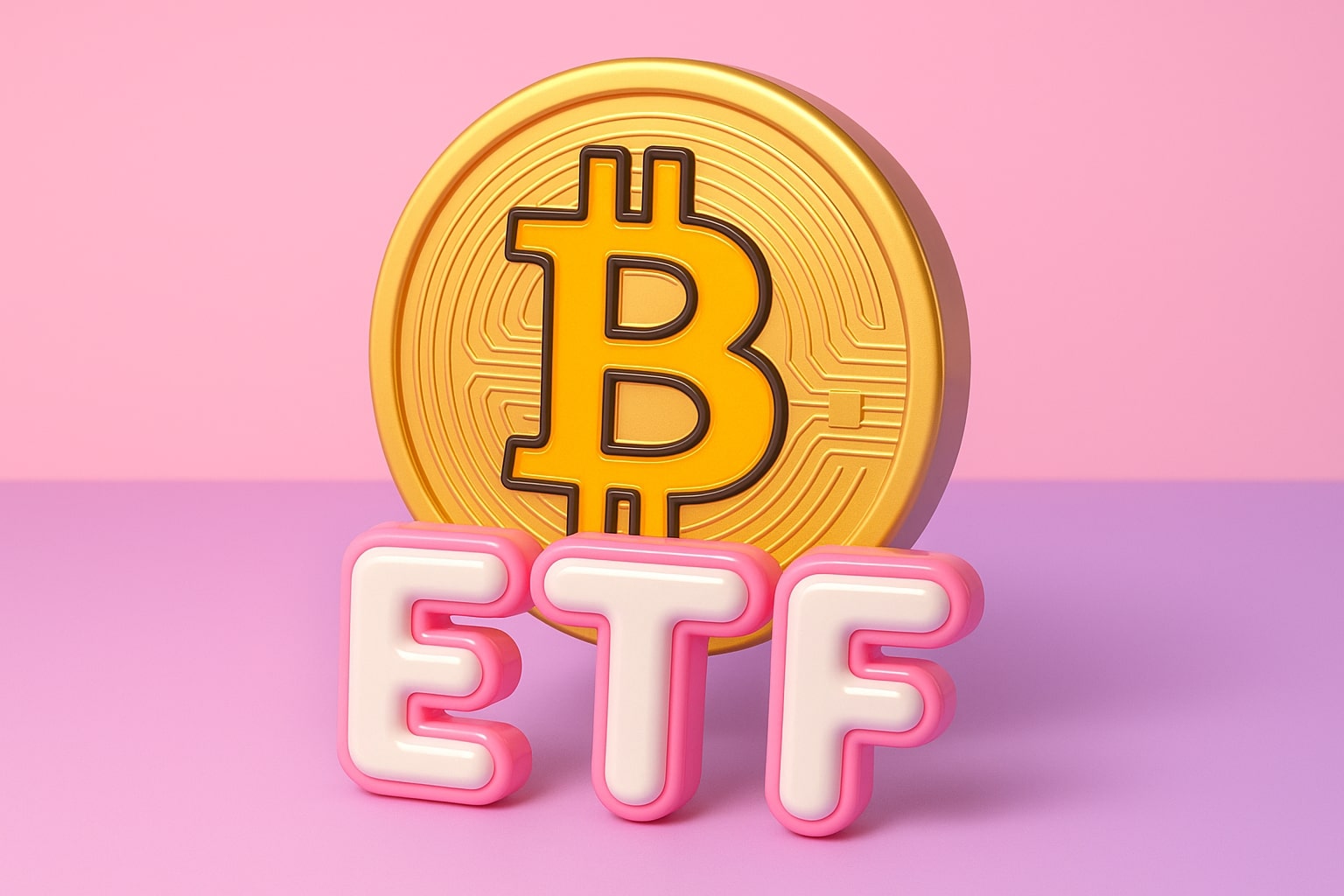
Stock Market Today - Nasdaq Rallies to 23,120 Record as AI Stocks Lift Markets, Dow Slides on Shutdown Tensions
Wall Street ends week mixed: S&P 500 6,698 (+0.2%), Dow 46,175 (-0.4%), Gold >$4,000, Oil $61.8 (-2%), while the U.S. shutdown enters day 10 and AI leaders NVDA & AMD power Nasdaq gains | That's TradingNEWS
Wall Street Ends the Week Split as Nasdaq Sets Record and Dow Retreats Amid Government Gridlock
The U.S. stock market closed a volatile week with mixed signals, as optimism over artificial intelligence demand and corporate resilience battled the drag from a prolonged federal shutdown. The Nasdaq Composite (^IXIC) hit an all-time intraday high near 23,120 before trimming gains to finish marginally higher, extending its weekly advance to roughly +1.1%. The S&P 500 (^GSPC) rose 0.2% to 6,698.85, while the Dow Jones Industrial Average (^DJI) lagged with a 0.4% decline to 46,175.59, pressured by weakness in financial and industrial components.
Trading remained cautious as Washington’s funding impasse entered its 10th day, freezing government data releases and leaving investors reliant on private indicators. Despite limited visibility, the University of Michigan’s early-October survey showed consumer sentiment steady at 55.0, only fractionally below September’s 55.1, suggesting that household confidence remains intact even amid political paralysis.
AI Stocks Drive Nasdaq Momentum: NVDA and AMD Extend Leadership
Tech giants once again anchored Wall Street’s strength. Nvidia (NASDAQ:NVDA) climbed 0.6% Friday and 2.6% for the week after CEO Jensen Huang said computing demand has “gone up substantially,” reinforcing expectations for sustained AI infrastructure spending. Advanced Micro Devices (NASDAQ:AMD) surged after unveiling a multi-year strategic partnership with OpenAI to supply up to 6 GW of AI processors, starting with 1 GW of MI450 units in 2026. As part of the deal, OpenAI received warrants for 160 million AMD shares, underscoring confidence in AMD’s hardware roadmap.
Taiwan Semiconductor Manufacturing (NYSE:TSM) reported NT$331 billion in September revenue (≈$10.9 billion), exceeding expectations by 10%. Sales rose 31.4% year-on-year, bolstering semiconductor sentiment despite geopolitical friction with Beijing. However, Qualcomm (NASDAQ:QCOM) slumped more than 3% after Chinese regulators launched an antitrust probe tied to its acquisition of Israel’s Autotalks, illustrating how trade tensions continue to shadow the chip sector even amid robust AI demand.
Earnings Season Looms as Banks Prepare to Report
Investors are positioning for a critical earnings cycle set to kick off next week with JPMorgan Chase (NYSE:JPM) and Citigroup (NYSE:C). Financials have underperformed this month as expectations build that tariffs and slower consumer activity will weigh on net interest income. Jamie Dimon, JPMorgan’s CEO, warned in a BBC interview that the probability of a U.S. market correction is closer to 30%, far higher than what current valuations imply, citing “uncertainty in geopolitics, fiscal spending, and the remilitarization of the world.” His comments amplified defensive positioning across financials, with the KBW Bank Index down 0.8% to 147.12.
The Fed chair succession also loomed large after Treasury Secretary Scott Bessent reportedly narrowed the candidate list to five, including Vice Chair Michelle Bowman and former NEC director Kevin Hassett. Monetary policy speculation intensified following remarks by Fed Governor Christopher Waller, who acknowledged the need to cut rates but urged caution, noting, “Something’s got to give — either the labor market rebounds to match GDP growth, or GDP growth slows.” His statement tempered hopes for swift easing, keeping U.S. 10-year yields (^TNX) anchored near 4.09%.
Consumer Resilience and Inflation Outlook
Despite political gridlock, the University of Michigan data reflected only a minor deterioration in consumer outlook. The current conditions index rose 1% to 61.0, while expectations slipped to 51.2. One-year inflation expectations eased to 4.6%, and the five-year outlook held at 3.7%, suggesting that price anxieties are stabilizing but remain well above the Fed’s 2% target. “Pocketbook issues like high prices and weakening job prospects remain at the forefront of consumers’ minds,” survey director Joanne Hsu noted.
The Bureau of Labor Statistics confirmed that some furloughed employees will return temporarily to finalize the September CPI, expected by late October. Analysts anticipate the delayed report could show headline inflation stuck near 3.4% year-over-year, keeping the central bank’s policy path uncertain.
Sector Highlights: Applied Digital Leads AI Infrastructure Boom
The day’s most dramatic mover was Applied Digital (NASDAQ:APLD), soaring +30% after fiscal-Q1 revenue jumped 84% YoY to $64.2 million, far ahead of the $50 million consensus. The data-center operator finalized a new 150 MW lease with CoreWeave (CRWV), expanding total contracted lease revenue to roughly $11 billion. The stock’s rally lifted peers like CoreWeave (+4%) and bolstered sentiment across high-performance computing infrastructure plays. Analysts now expect further colocation deals before year-end as AI workloads accelerate.
Conversely, Levi Strauss (NYSE:LEVI) dropped 7% after raising FY 2025 EPS guidance to $1.27–$1.32 but still missing Wall Street’s midpoint forecast of $1.31. Tariffs imposed under President Trump’s trade program shaved 80 bps off Q3 gross margin and are projected to cut 130 bps next quarter. Despite solid +12% revenue growth in Asia and +5% in Europe, traders focused on margin pressure and weak U.S. mainline sales, driving shares down 12% intraday.
Energy and Commodities React to Global Shifts
Crude prices continued their steep retreat as Middle East risk premiums faded. Brent (BZ=F) dropped nearly 2% to $63.96, while WTI (CL=F) slid below $62, marking the lowest level since early summer. Israel’s approval of a Gaza prisoner-exchange framework and partial troop withdrawals spurred optimism for a ceasefire, easing geopolitical tension. Analysts at TradingNews expect supply to outpace demand through year-end as Saudi output remains above 9.3 million bpd and U.S. production holds near record highs.
In contrast, gold (XAU/USD) rallied back above $4,000 per ounce, gaining 0.76%, as investors sought refuge amid fiscal uncertainty. Silver (SI=F) extended its two-day surge, outpacing bullion as the dollar index (DXY) eased to 96.41 (-0.11%). The rotation into precious metals reflects a defensive tilt ahead of earnings season and persistent inflation anxiety.
Bitcoin (BTC-USD) remained volatile, slipping 0.4% to $120,576 after touching $122,000 overnight, while crypto-linked equities stayed resilient given growing ETF inflows. The token remains up 14% month-to-date, supported by institutional accumulation and reduced mining outflows.
Housing and Small-Cap Weakness Deepen Market Divergence
While megacaps lifted the Nasdaq, small-cap and housing names lagged sharply. The iShares U.S. Home Construction ETF (ITB) tumbled 7.5% on the week, its worst showing since December 2024. Builders such as DR Horton (NYSE:DHI), KB Home (NYSE:KBH), and PulteGroup (NYSE:PHM) all plunged over 10%, reflecting mounting concerns that high mortgage rates and tariff-driven material costs are stalling new-home demand. The Russell 2000 gained only 0.28% Friday but remains down 2.4% for the month, highlighting investors’ preference for large-cap stability.
Macro Crosscurrents Shape Market Outlook
The persistent government shutdown has constrained economic visibility and disrupted release schedules for vital data such as non-farm payrolls and inflation metrics. Prediction markets now price a 37% probability that the closure lasts beyond October 30, the longest since the 34-day standoff in 2019. The political impasse, combined with ongoing trade tensions between Washington and Beijing, underscores how policy risk has re-emerged as a defining market variable.
China’s decision to restrict rare-earth exports and impose new port fees on U.S. vessels adds another layer of pressure on industrial supply chains. Simultaneously, Beijing’s probe into Qualcomm signals retaliatory tactics ahead of renewed tariff talks. Despite these headwinds, equity valuations remain buoyed by AI euphoria and resilient corporate earnings, suggesting a split market where technology thrives while cyclical sectors falter.
Technical and Sentiment Overview
The S&P 500 now trades roughly 7% above its 50-day moving average and 14% above its 200-day line — a historically stretched position that often precedes consolidation phases. Momentum indicators show relative strength in tech (RSI ≈ 72) but negative divergence across financials and energy. The VIX at 16.36 (-0.43%) signals complacency, though volatility could spike once CPI data resumes.
Equity fund inflows continued this week, with tech-focused ETFs capturing over $4.2 billion, while defensive utilities and consumer staples saw outflows exceeding $1 billion. Bond yields’ retreat toward 4.09% revived appetite for growth exposure, reinforcing Nasdaq’s leadership even as valuation concerns mount.
Read More
-
VIG ETF Hits $220.60 as Dividend Growth and $116.6B AUM Signal Renewed Upside
09.12.2025 · TradingNEWS ArchiveStocks
-
XRP ETFs Cross $1.2B AUM as XRPI at $12.34 and XRPR $17.31 Signal Accelerating Institutional Demand
09.12.2025 · TradingNEWS ArchiveCrypto
-
Natural Gas Prices Slide to $4.60 (NG=F) After Two-Day 13% Drop — EIA Still Sees $5 Average
09.12.2025 · TradingNEWS ArchiveCommodities
-
USD/JPY Price Forecast - Pairs Steadies Near 156.90 as Fed Cut and Yield Gap Shape Path Toward 157.80
09.12.2025 · TradingNEWS ArchiveForex
Market View: Cautious Optimism, Concentrated Leadership
The current setup reflects a bifurcated market — strength concentrated in AI and semiconductors versus stagnation in cyclicals and small caps. As of Friday’s close, the S&P 500 has gained 0.5% week-to-date, the Nasdaq is up over 1%, and the Dow is down 0.5%, confirming that leadership remains narrow but powerful.
Based on the week’s dynamics:
-
Nasdaq (Buy) – momentum intact, led by NVDA, AMD, TSM, and strong AI infrastructure demand.
-
S&P 500 (Hold) – extended valuations and Fed uncertainty suggest consolidation risk.
-
Dow Jones (Sell/Hold) – cyclical drag, financial weakness, and tariff exposure cap upside.
-
Gold (Buy) – above $4,000 confirms safe-haven bid amid political dysfunction.
-
Oil (Sell) – under $62 WTI signals oversupply pressure as geopolitical premiums fade.
Final Outlook: Wall Street remains trapped between structural optimism around AI and the macro fog of fiscal deadlock and trade escalation. Until the shutdown ends and inflation data clarifies, markets are likely to oscillate with tech dominance masking underlying economic fatigue — a landscape where selectivity, not index-wide exuberance, defines the next leg.


















